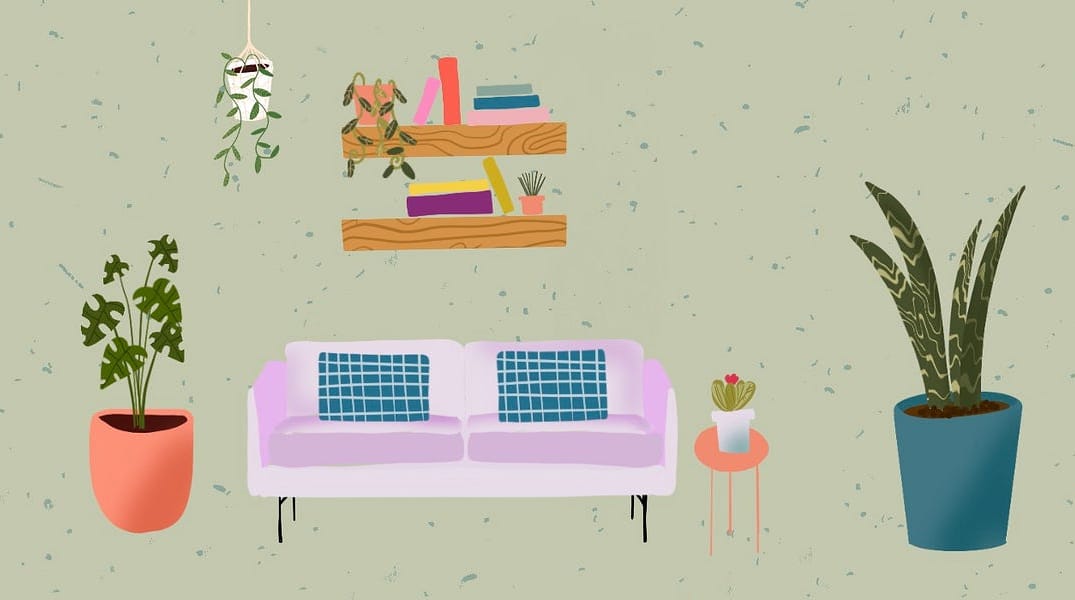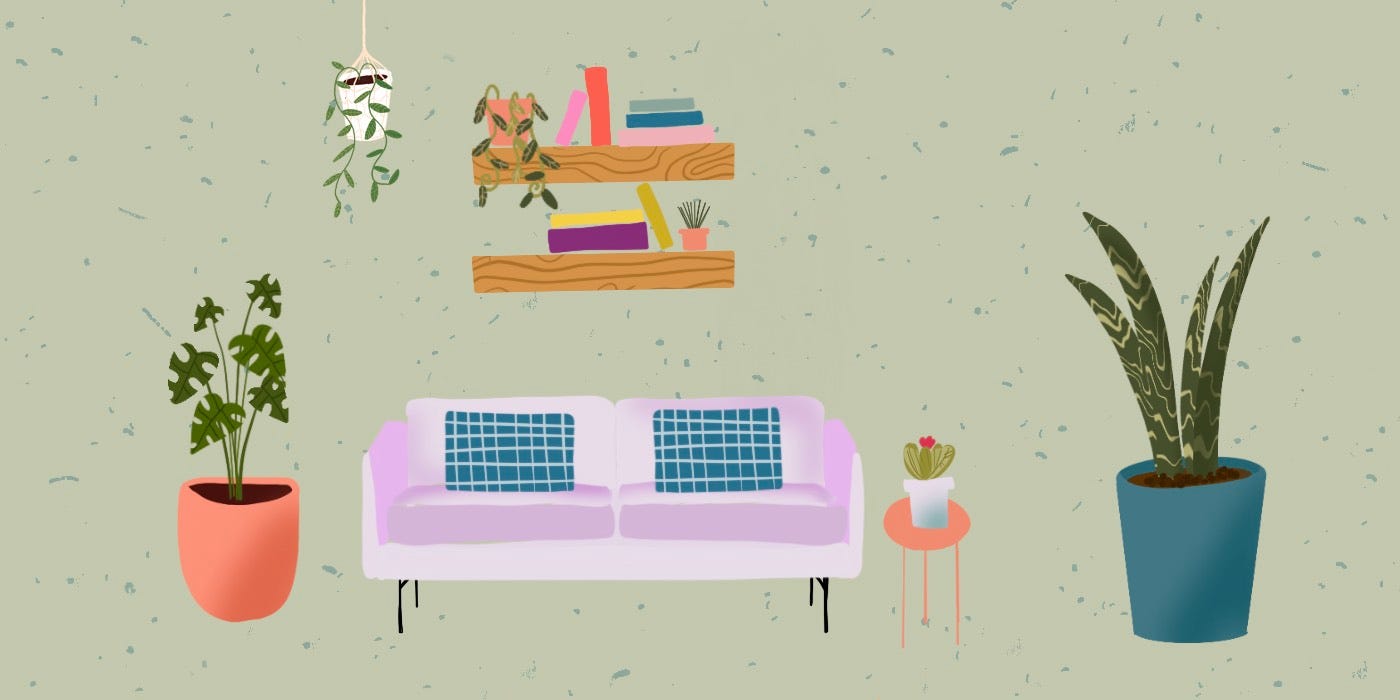
It began with my last day of work and a pot of parsley. I quit my job with comedic timing — San Francisco entered shelter-in-place 13 days after I gave my two-week notice. Fine, I thought, more time to focus on starting that garden. I already had the parsley.
Shelter-in-place meant cooking at home more, and that meant buying a lot more produce, but inevitably my fresh herbs would turn to slime in the fridge. My parsley plant suddenly felt magical, a seemingly endless supply of dinner ingredients that wouldn’t go bad. Maybe the parsley was looking lonely, or I’d just been playing too much Animal Crossing, but I started having visions of my own little garden, sustainable and nutritious and all grown by my own hand. I can fit plenty of plants there, I thought as I eyed our kitchen’s single sunny window.
To start a garden, you need a plan. You can, for instance, build your garden around one or two favorite herbs, buying other plants that have similar or complementary needs so you don’t get overwhelmed. Take it from me: It’s all too easy to get overwhelmed.
I thought I had a plan when I started. Planning is something I do for fun, optimistically, relishing in the fantasy of it. I planned how I would leave my job and make my way through different creative projects until I understood what I wanted from my career. When I planned for my new indoor garden, it was that optimistic, sparkly-eyed kind of planning: terracotta pots overflowing with leafy herbs, tomatoes ripening on the vine. At the grocery store, I noticed the revolving rack of seeds. One by one I plucked the mini-garden of my dreams: cilantro, dill, basil. At home, I sprinkled them in soil-filled trays.
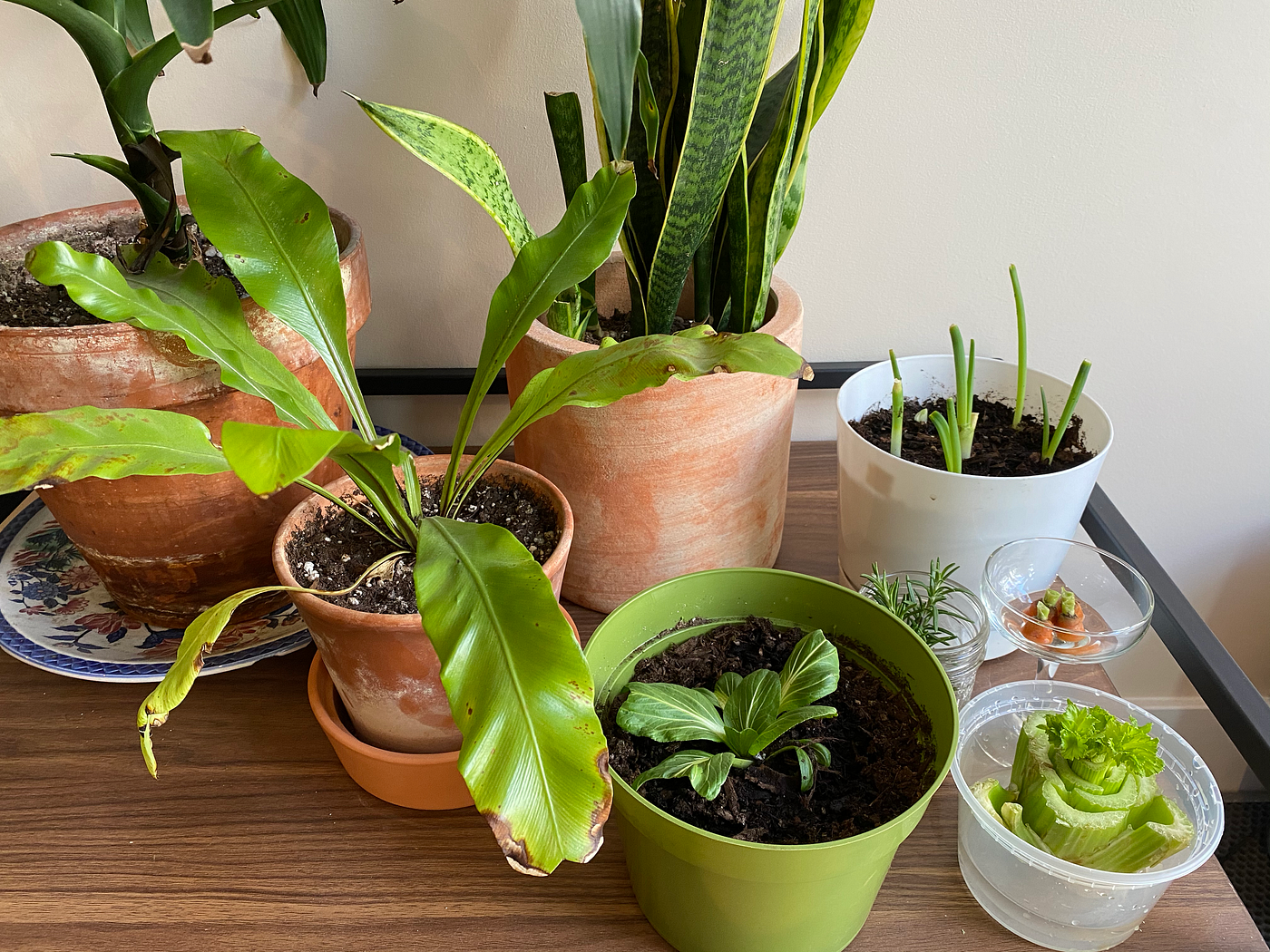
Then I turned to work. I signed up for a short story contest a month before the deadline, and also decided to finish a video game prototype in that same month. I sat at my desk and brainstormed ideas for the story. They came easy. The next day I sat down in our shared yard next to the towering yucca, feeling warm and very Californian, and began to turn those ideas into sentences. They came less easily. They were wordy and awkward, and the storylines never worked. Of course none of these drafts are any good, I reminded myself. I just started.
Within a week the seeds grew mold. I watered the parsley and ignored the dying seeds. Don’t let your first real gardening project be seeds. I know they seem fun, but trust me on this one.
Days, then weeks, passed. My drafts weren’t improving. It shouldn’t have mattered, but it started to consume me — I was so lucky to have this time off, and I was wasting it. Who was I to feel adrift when I had left my job to “find myself” amid record unemployment? My emotions started going haywire: The mornings could be optimistic and sunny, but by midafternoon, I felt the creeping wave of doubt, or regret, or guilt, or just emptiness. My journals from this time are filled with anger and guilt that I wasn’t able to “produce.” Some days I would write hundreds of words. On other days I couldn’t do anything. And I certainly wasn’t growing cilantro.
One day, haphazardly procrastinating by swiping between apps, a photo caught my eye. A small bouquet of scallions rooting in water on a windowsill.
The pandemic “micro-trend” of sticking your scallion ends in water was everywhere on my feed. I figured I should do my part, too. I rescued some crisp white ends from the compost bin and left them in water overnight. The next day a velvety stem peeked out.
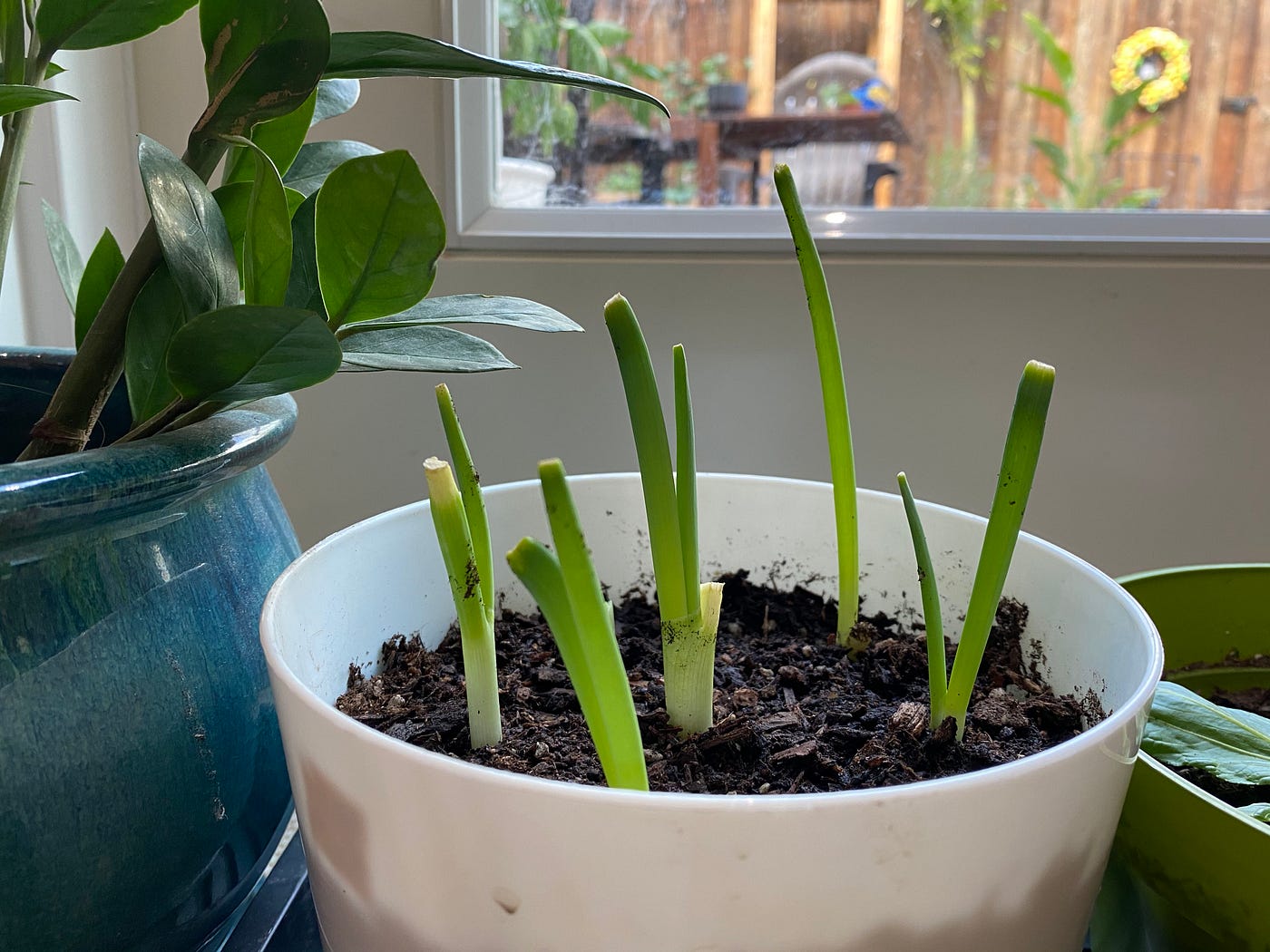
It was a small, easy win, but it was one that I needed. If you’re looking to start your own apartment garden, go for those wins. A short growth or already-harvestable plant — like regrowing the scraps from a plant you buy at the store — will give you a reward and a good idea of what it will be like to care for the plant long-term. I committed to changing the scallions’ water every day.
After about a week, I took another go at growing cilantro seeds with some newfound confidence. This time I tried letting the seeds float in a cup of water for a day before I poked them into a planter. Within a week tiny green curlicues unfurled on the soil’s surface, then lengthened into shoots. Each one gave me a little thrill. It felt like I had solved an impossible math problem left up on a chalkboard. But as the shoots grew they became stretched out, so skinny they couldn’t hold up their leafy heads. Soon they were all stuck in a permanent dramatic swoon, like Victorian women on a hot night.
I Googled their symptoms and after perusing some gardening blogs, determined that they weren’t getting enough light. Seedlings need strong, consistent light. I added that to my mental notes — always assess how much light your space gets throughout the day — and moved on. At least my scallions were doing well. I transferred them from water to potting soil and snipped off a new growth for dinner that night, eager for it to grow again.

I tried regrowing other scraps: bok choy, celery. The rewards, or sometimes failures, came quick. When you start with small projects, you learn faster. I thought I had been doing that with the short story, with the video game prototype. But the seeds had taught me something else: You can leave things behind when they’re not working. I left the story behind and tabled the game, then signed up for a microfiction contest. One hundred words per story — can’t get much smaller than that. I practiced writing micro-stories and wrote five in a day. They weren’t perfect, but it didn’t matter. I could just write another.
Here’s the thing about a garden: You get what you give. I had focused so much on the tantalizing bounty of my desired end result that I hadn’t asked myself how I wanted to care for it. I didn’t want just the slow, hidden growth of seeds. I liked caring for the full-grown plants I bought, but I also craved more variability, and I was able to find that by propagating scraps from dinner. When you plan out your own garden, figure out what you want from it. This should include not only what you’ll harvest, but how your little garden will fit into your lifestyle. Maybe you want a reliable routine, or maybe you want to experiment. Maybe you want both.

I made a daily plan around my plants, and this became a daily plan for myself. During my morning work break, I’d replace the water for whatever scrap I was growing, and in the afternoon I’d check each plant for whatever it may need. Curling leaves wanted water, yellowing leaves might want a spot in the sun. I celebrated the small successes: new growths, or the single blackberry grown on a vine that somehow survived for months before but finally started reliably watering it. Then I’d go back to work.
The writing still came slow, but the steps became clearer and more rewarding. It felt better, even when I couldn’t make a story’s ending work. Even when a plant died. Because it’s not about the plant. It’s not about the end. It’s about the actions I plan my life around, the nurturing and the doing. There will always be more growing to do.
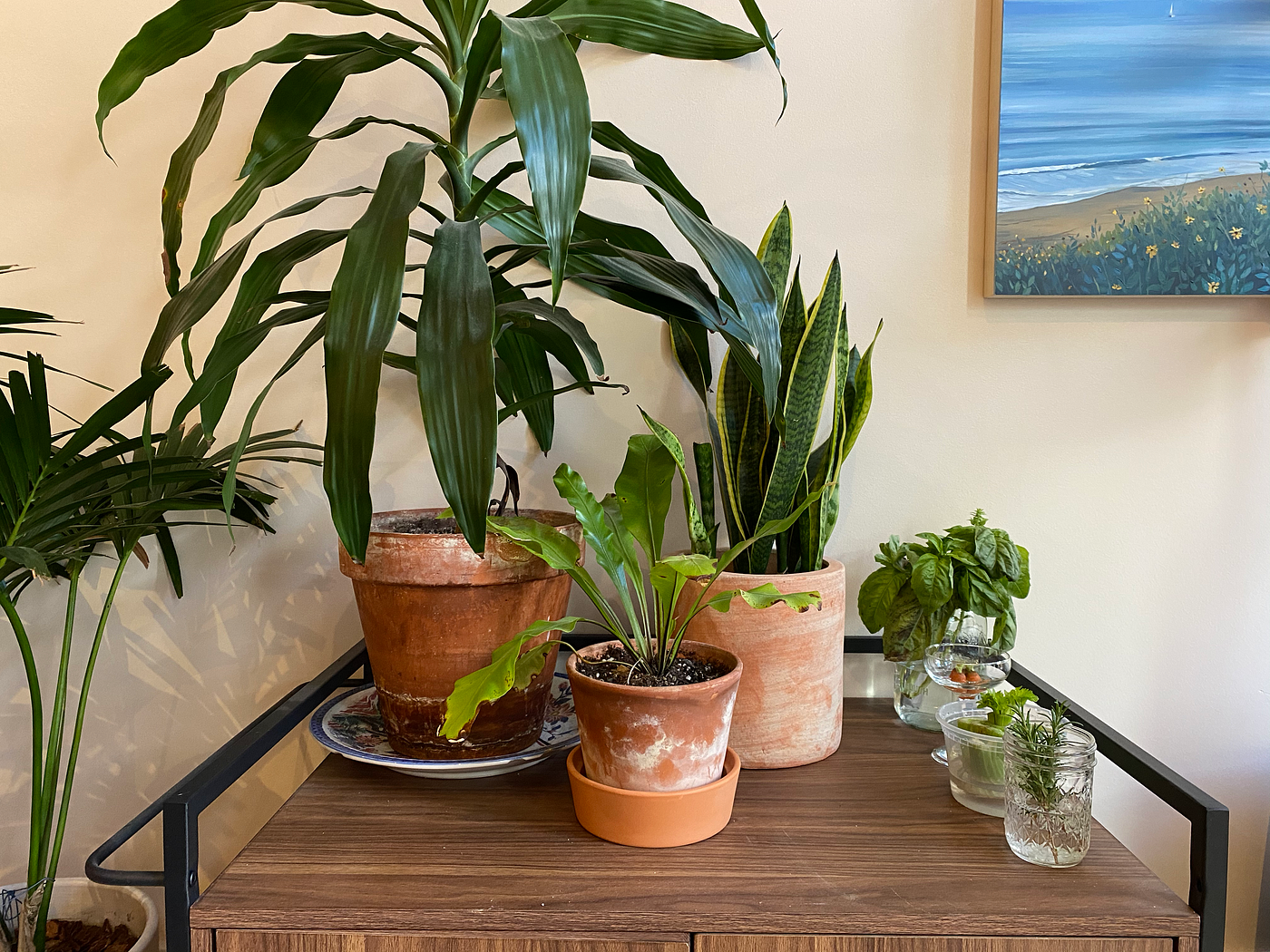
Sign up for The Bold Italic newsletter to get the best of the Bay Area in your inbox every week.



